Effects of Convection on Sisko Fluid with Peristalsis in an Asymmetric Channel
Abstract
1. Introduction
2. Formulation of Problem with Constitutive Equations
3. Systematic Solution Process
3.1. Zeroth Order System
3.2. First Order System
3.3. Solution at Zeroth Order
3.4. Solution at First Order
4. Results and Discussion
4.1. Pumping Characteristics
4.2. Velocity Profile
4.3. Heat Transfer Profile
4.4. Trapping
5. Major Outcomes
Author Contributions
Funding
Conflicts of Interest
Appendix A
References
- Latham, T.W. Fluid Motion in a Peristaltic Pump. Master’s Thesis, MIT, Cambridge, MA, USA, 1966. [Google Scholar]
- Shapiro, A.H.; Jaffrin, M.Y.; Weinberg, S.L. Peristaltic pumping with long wavelengths at low Reynolds number. J. Fluid Mech. 1969, 37, 799–825. [Google Scholar] [CrossRef]
- Jaffrin, M.Y.; Shapiro, A.H. Peristaltic pumping. Ann. Rev. Fluid Mech. 1971, 3, 13–37. [Google Scholar] [CrossRef]
- Rath, H.J. Peristaltic flow through a lobe-shaped tube. Int. J. Mech. Sci. 1982, 24, 359–367. [Google Scholar] [CrossRef]
- Mekheimer, K.S.; Abdellateef, A.I. Peristaltic transport through eccentric cylinders: Mathematical model. Appl. Bio. Biomech. 2013, 10, 19–27. [Google Scholar] [CrossRef]
- Khan, A.S.; Nie, Y.; Shah, Z. Impact of thermal radiation on magnetohydrodynamic unsteady thin film flow of Sisko fluid over a stretching surface. Processes 2019, 7, 369. [Google Scholar] [CrossRef]
- Ramesh, K.; Tripathi, D.; Bhatti, M.M.; Khalique, C.M. Electro-osmotic flow of hydromagnetic dusty viscoelastic fluids in a microchannel propagated by peristalsis. J. Mol. Liq. 2020, 314, 113568. [Google Scholar] [CrossRef]
- Tariq, H.; Khan, A.A.; Zaman, A. Theoretical analysis of peristaltic viscous fluid with inhomogeneous dust particles. Arab. J. Sci. Eng. 2020. [Google Scholar] [CrossRef]
- Bhandari, D.S.; Tripathi, D.; Narla, V.K. Pumping flow model for couple stress fluids with a propagative membrane contraction. Int. J. Mech. Sci. 2020. [CrossRef]
- Abd-Alla, A.M.; Abo-Dahab, S.M. Magnetic field and rotation effects on peristaltic transport of a Jeffrey fluid in an asymmetric channel. J. Magn. Magn. Mat. 2015, 374, 680–689. [Google Scholar] [CrossRef]
- Lachiheb, M. Effect of coupled radial and axial variability of viscosity on the peristaltic transport of Newtonian fluid. Appl. Math. Comput. 2014, 244, 761–771. [Google Scholar]
- Javed, M. A mathematical framework for peristaltic mechanism of non-Newtonian fluid in an elastic heated channel with Hall effect. Multidis. Model. Mat. Struct. 2020. [Google Scholar] [CrossRef]
- Ahmed, B.; Hayat, T.; Alsaedi, A.; Abbasi, F.M. Joule heating in mixed convective peristalsis of Sisko nanomaterial. J. Therm. Anal. Calorim. 2020. [Google Scholar] [CrossRef]
- Nadeem, S.; Abbas, N.; Malik, M.Y. Heat transport in CNTs based nanomaterial flow of non-Newtonian fluid having electro magnetize plate. Alex. Eng. J. 2020. [Google Scholar] [CrossRef]
- Abbasi, F.M.; Gul, M.; Shehzad, S.A. Effectiveness of temperature-dependent properties of Au, Ag, Fe3O4, Cu nanoparticles in peristalsis of nanofluids. Int. Commun. Heat Mass Transf. 2020, 116, 104651. [Google Scholar] [CrossRef]
- Nisar, Z.; Hayat, T.; Alsaedi, A.; Ahmad, B. Significance of activation energy in radiative peristaltic transport of Eyring-Powell nanofluid. Int. Commun. Heat Mass Transf. 2020, 116, 104655. [Google Scholar] [CrossRef]
- Khan, A.S.; Nie, Y.; Shah, Z. Impact of thermal radiation and heat source/sink on MHD time-dependent thin-film flow of Oldroyed-B, Maxwell, and Jeffery fluids over a stretching surface. Processes 2019, 7, 191. [Google Scholar] [CrossRef]
- Reddy, M.G. Heat and mass transfer on magnetohydrodynamic peristaltic flow in a porous medium with partial slip. Alex. Eng. J. 2016, 55, 1225–1234. [Google Scholar] [CrossRef]
- Hayat, T.; Yasmin, H. Maryem Al-Yami, Soret and Dufour effects in peristaltic transport of physiological fluids with chemical reaction: A mathematical analysis. Comput. Fluids 2014, 89, 242–253. [Google Scholar] [CrossRef]
- Bhatti, M.M.; Ellahi, R.; Zeeshan, A.; Marin, M.; Ijaz, N. Numerical study of heat transfer and Hall current impact on peristaltic propulsion of particle-fluid suspension with compliant wall properties. Mod. Phys. Lett. B 2019, 33, 1950439. [Google Scholar] [CrossRef]
- Riaz, A.; Ellahi, R.; Sait, S.M. Role of hybrid nanoparticles in thermal performance of peristaltic flow of Eyring-Powell fluid model. J. Them. Anal. Calorim. 2020. [Google Scholar] [CrossRef]
- Ahmed, R.; Ali, N.; Ullah Khan, S.; Tlili, I. Numerical simulations for mixed convective hydromagnetic peristaltic flow in a curved channel with joule heating features. AIP Adv. 2020, 10, 075303. [Google Scholar] [CrossRef]
- Abbas, M.A.; Bhatti, M.M.; Rashidi, M.M. Heat transfer on magnetohydrodynamic stagnation point flow through a porous shrinking/stretching sheet: A numerical study. Therm. Sci. 2020, 24, 1335–1344. [Google Scholar] [CrossRef]
- Riaz, A.; Bhatti, M.M.; Ellahi, R.; Zeeshan, A.; Sait, S.M. Mathematical analysis on an asymmetrical wavy motion of blood under the influence entropy generation with convective boundary conditions. Symmetry 2020, 12, 102. [Google Scholar] [CrossRef]
- Hina, S.; Hayat, T.; Asghar, S.; Hendi, A.A. Influence of compliant walls on peristaltic motion with heat/mass transfer and chemical reaction. Int. J. Heat Mass Transf. 2012, 55, 3386–3394. [Google Scholar] [CrossRef]
- Hayat, T.; Yasmin, H.; Alsaedi, A. Peristaltic flow of couple stress fluid in an asymmetric channel with convective conditions. Heat Transf. Res. 2016, 47, 327–342. [Google Scholar] [CrossRef]
- Yasmin, H.; Farooq, S.; Awais, M.; Alsaedi, A.; Hayat, T. Significance of heat and mass process in peristalsis of a rheological material. Heat Transf. Res. 2019, 50, 1561–1580. [Google Scholar] [CrossRef]
- Hayat, T.; Bibi, A.; Yasmin, H.; Alsaadi, F.E. Magnetic field and thermal radiation effects in peristaltic flow with heat and mass convection. J. Therm. Sci. Eng. Appl. 2018, 10, 051018. [Google Scholar] [CrossRef]
- Hussain, Q.; Hayat, T.; Asghar, S.; Alsaedi, A. Heat transfer in a porous saturated wavy channel with asymmetric convective boundary conditions. J. Cent. South Univ. 2015, 22, 392–401. [Google Scholar] [CrossRef]
- Danook, S.H.; Jasim, Q.K.; Hussein, A.M. Nanofluid convective heat transfer enhancement elliptical tube inside circular tube under turbulent flow. Math. Comput. Appl. 2018, 23, 78–87. [Google Scholar]
- Mkhatshwa, M.; Motsa, S.; Sibanda, P. Overlapping multi-domain spectral method for conjugate problems of conduction and MHD Free convection flow of nanofluids over flat plates. Math. Comput. Appl. 2019, 24, 75–102. [Google Scholar]

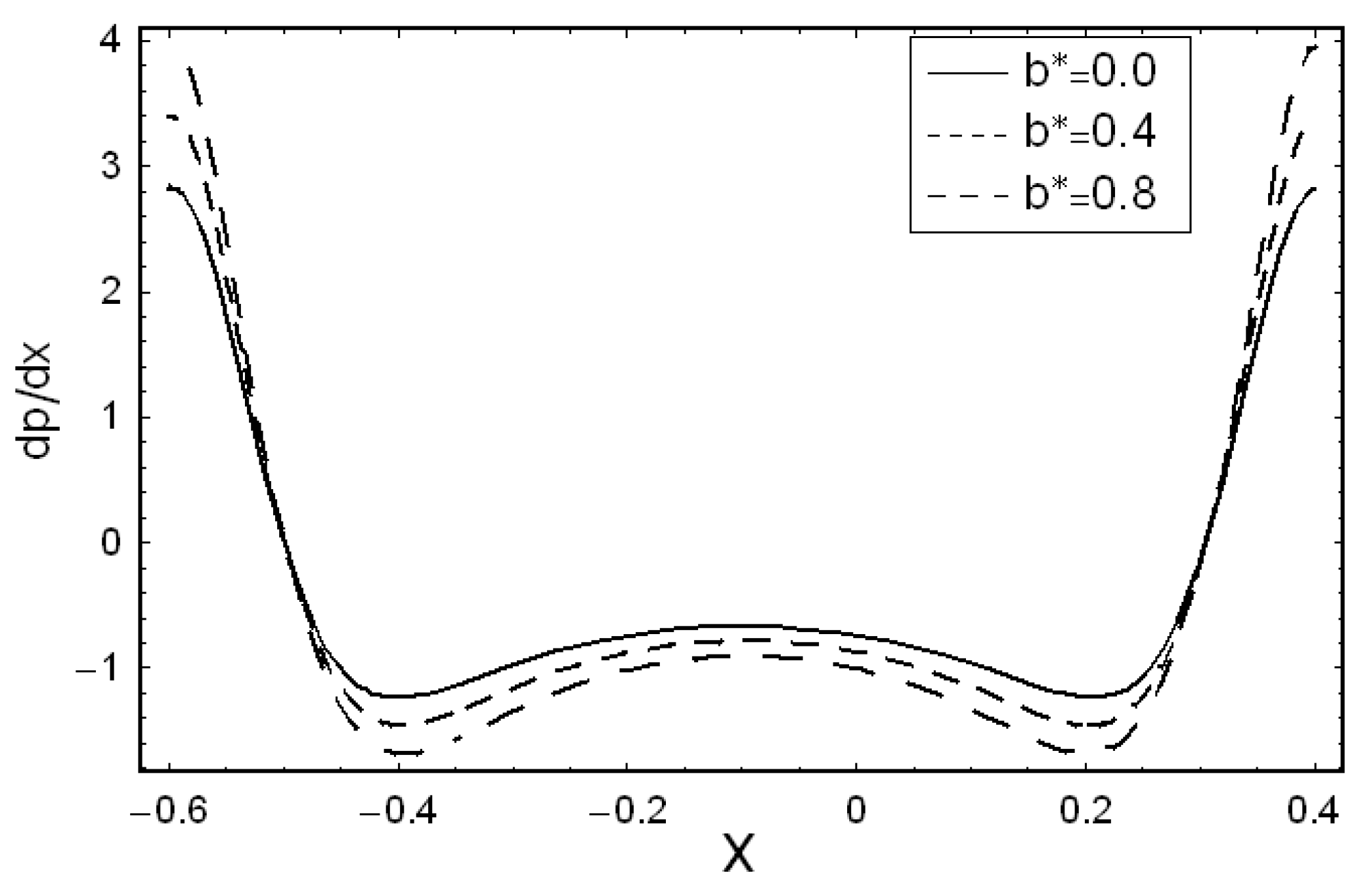
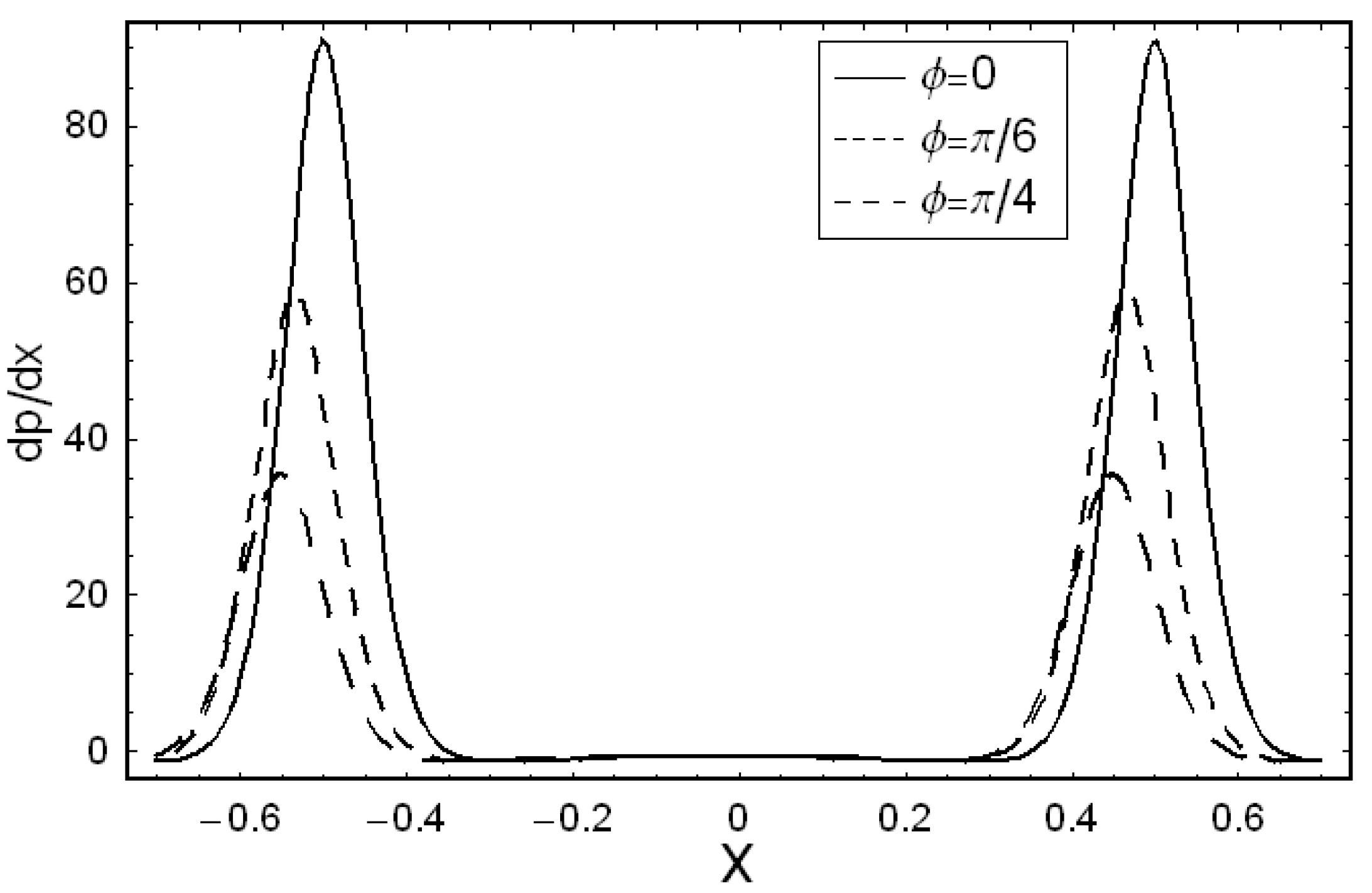
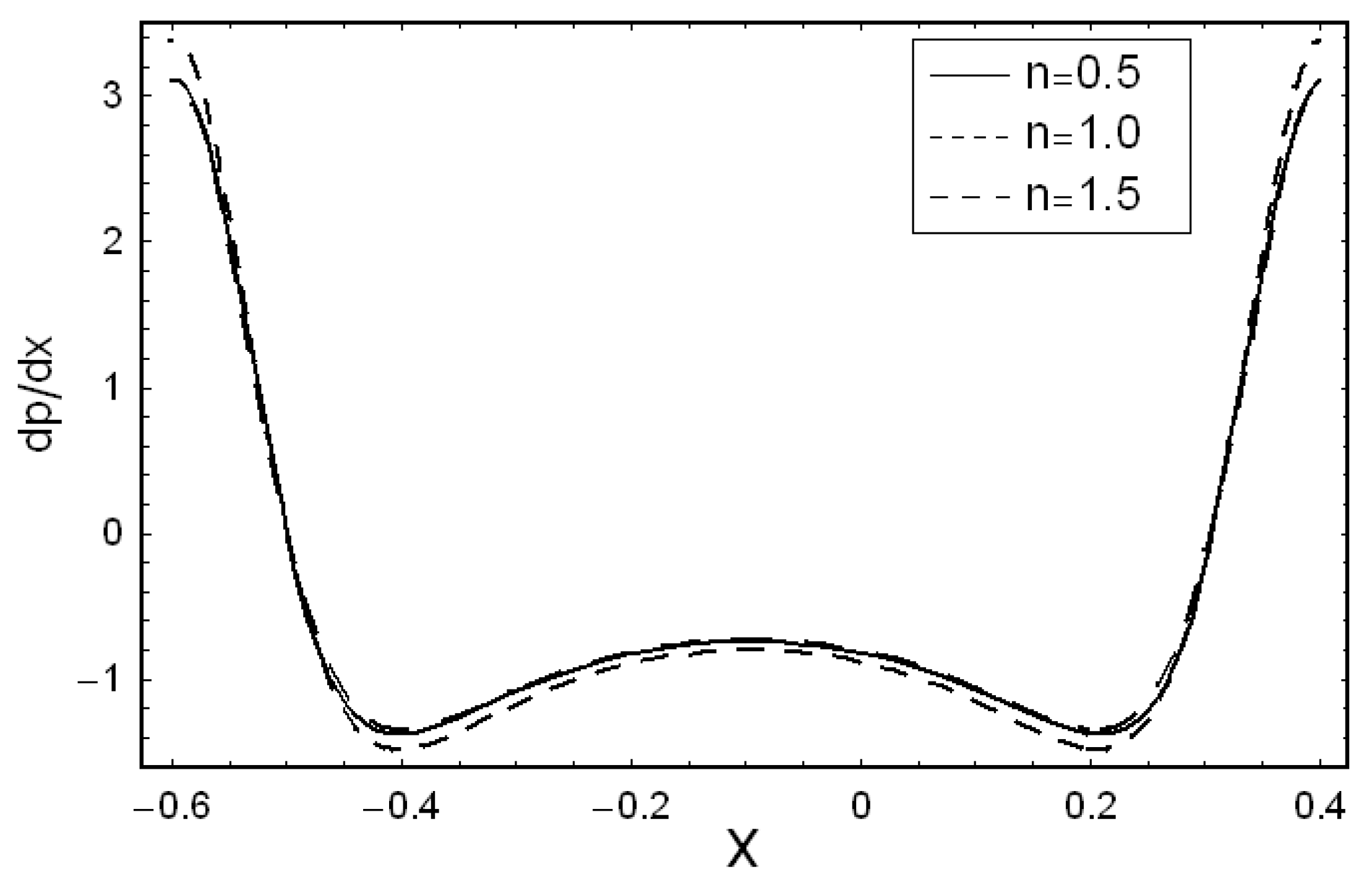
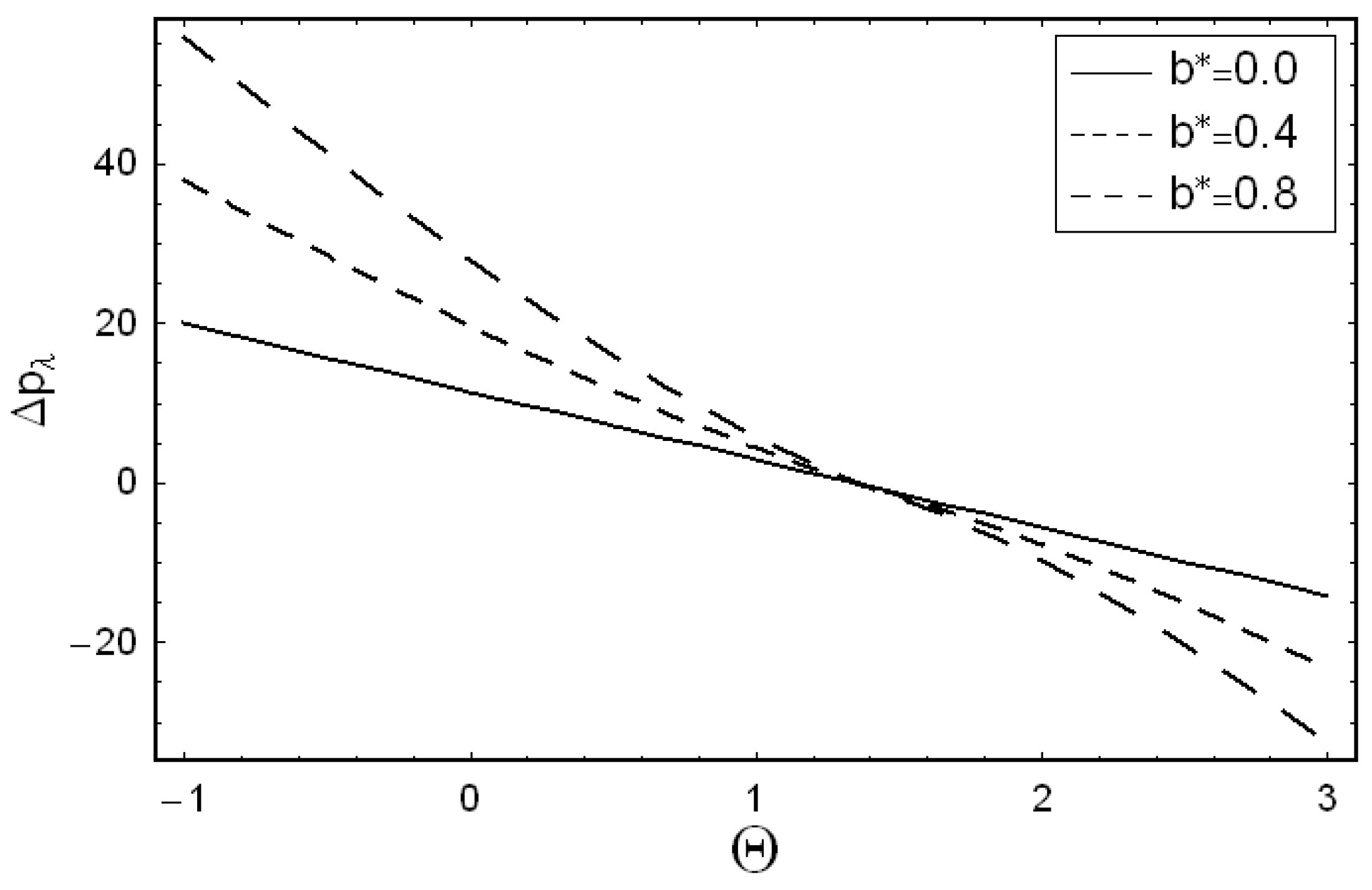
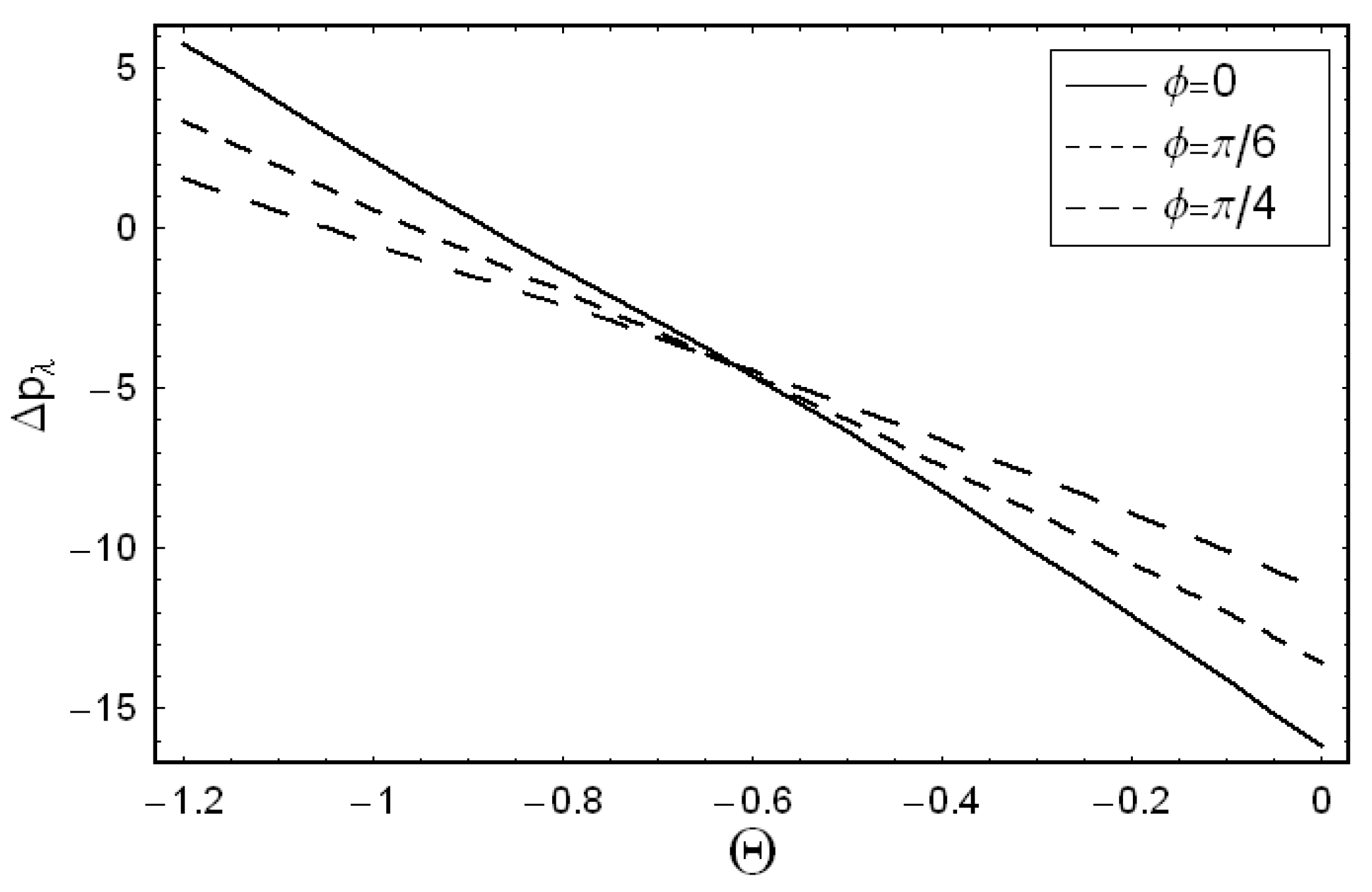
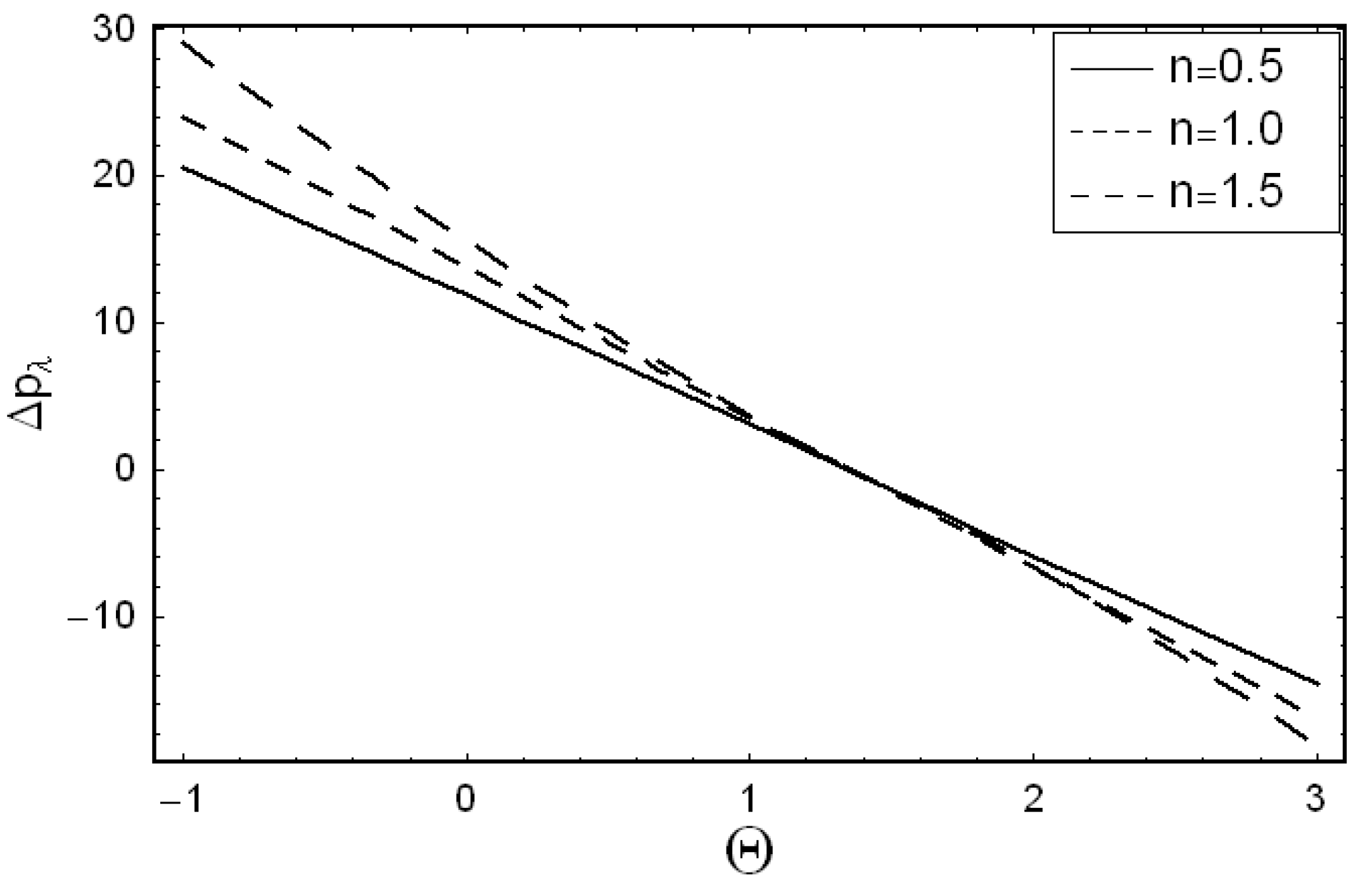

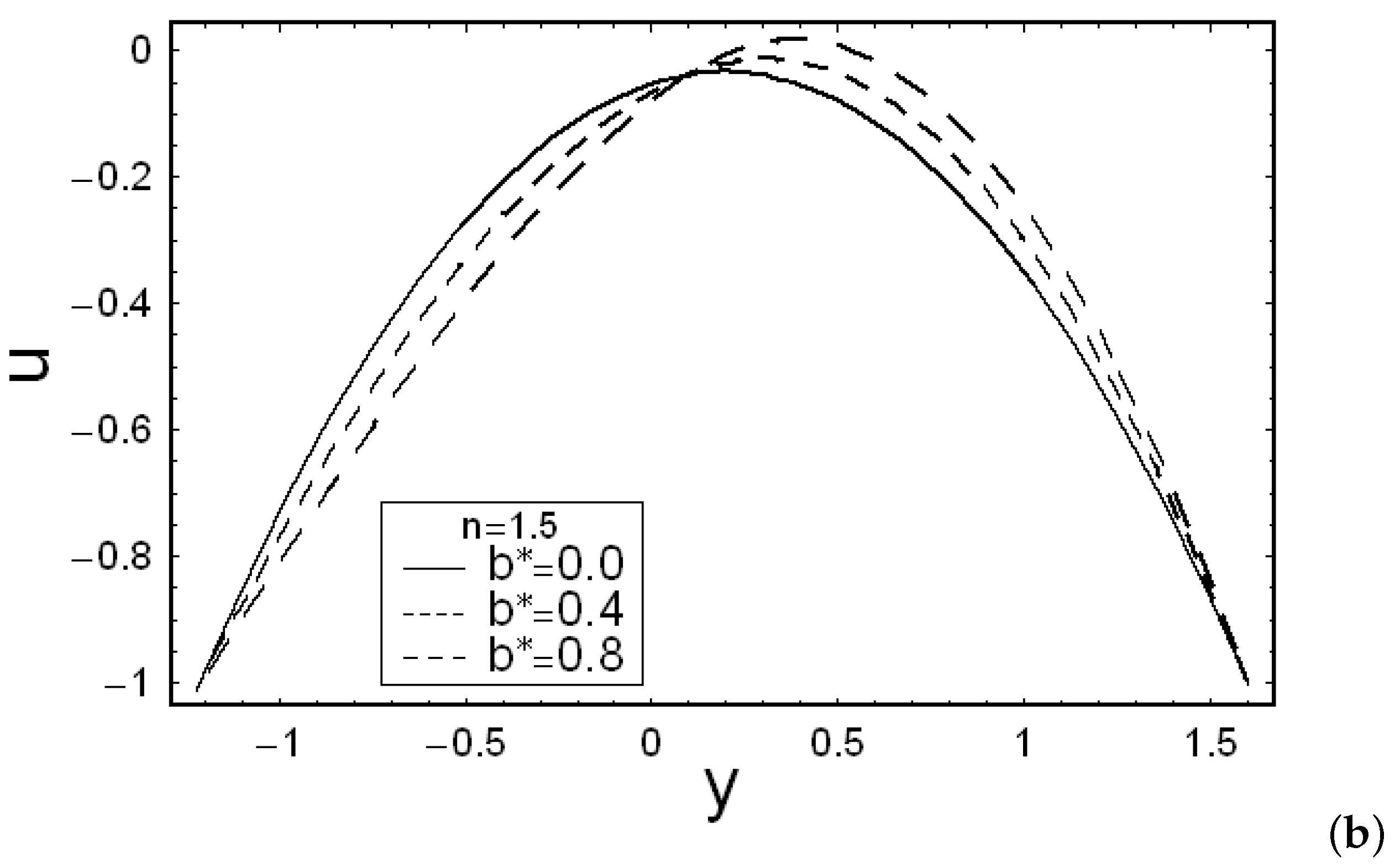

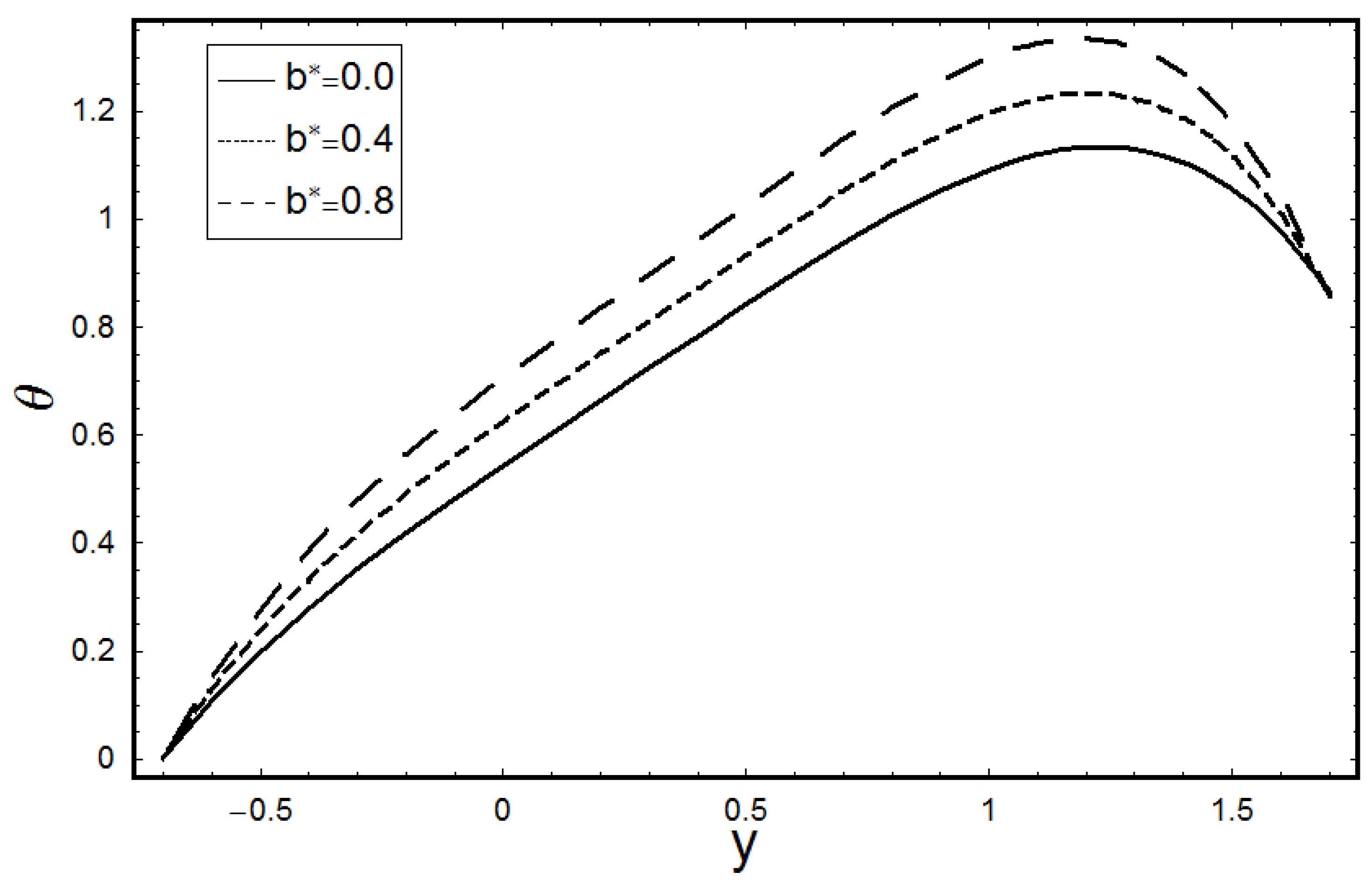
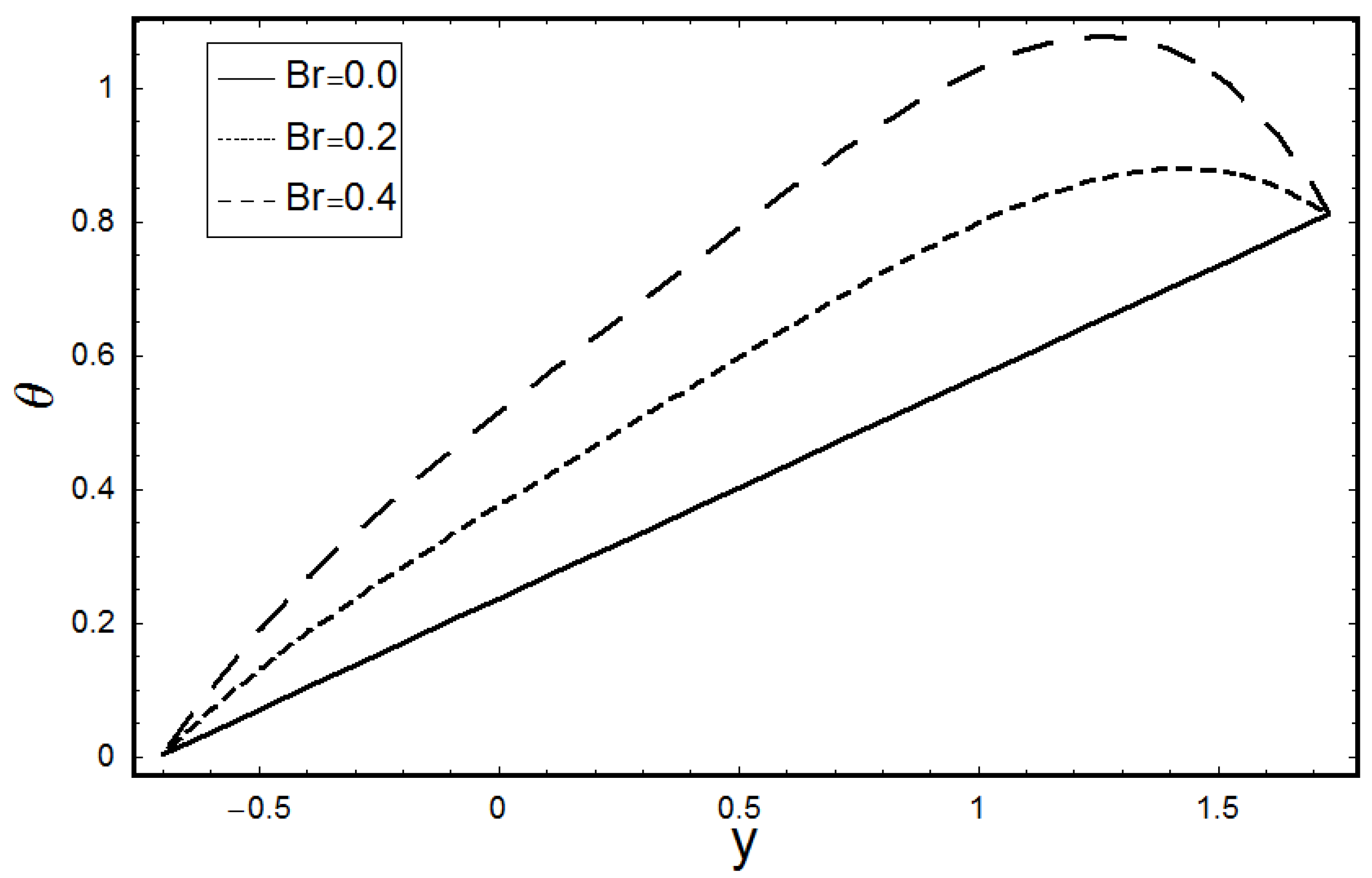
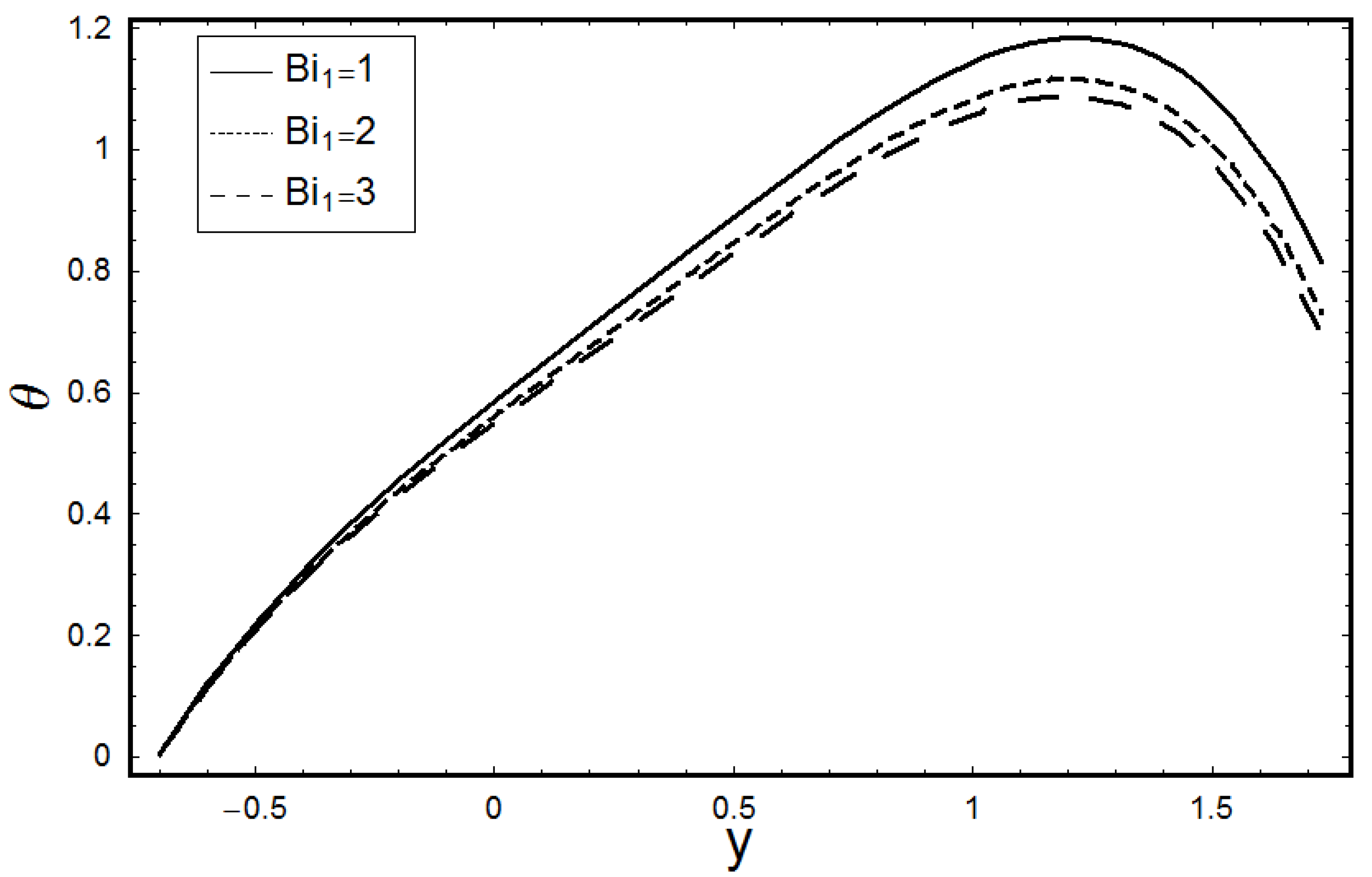
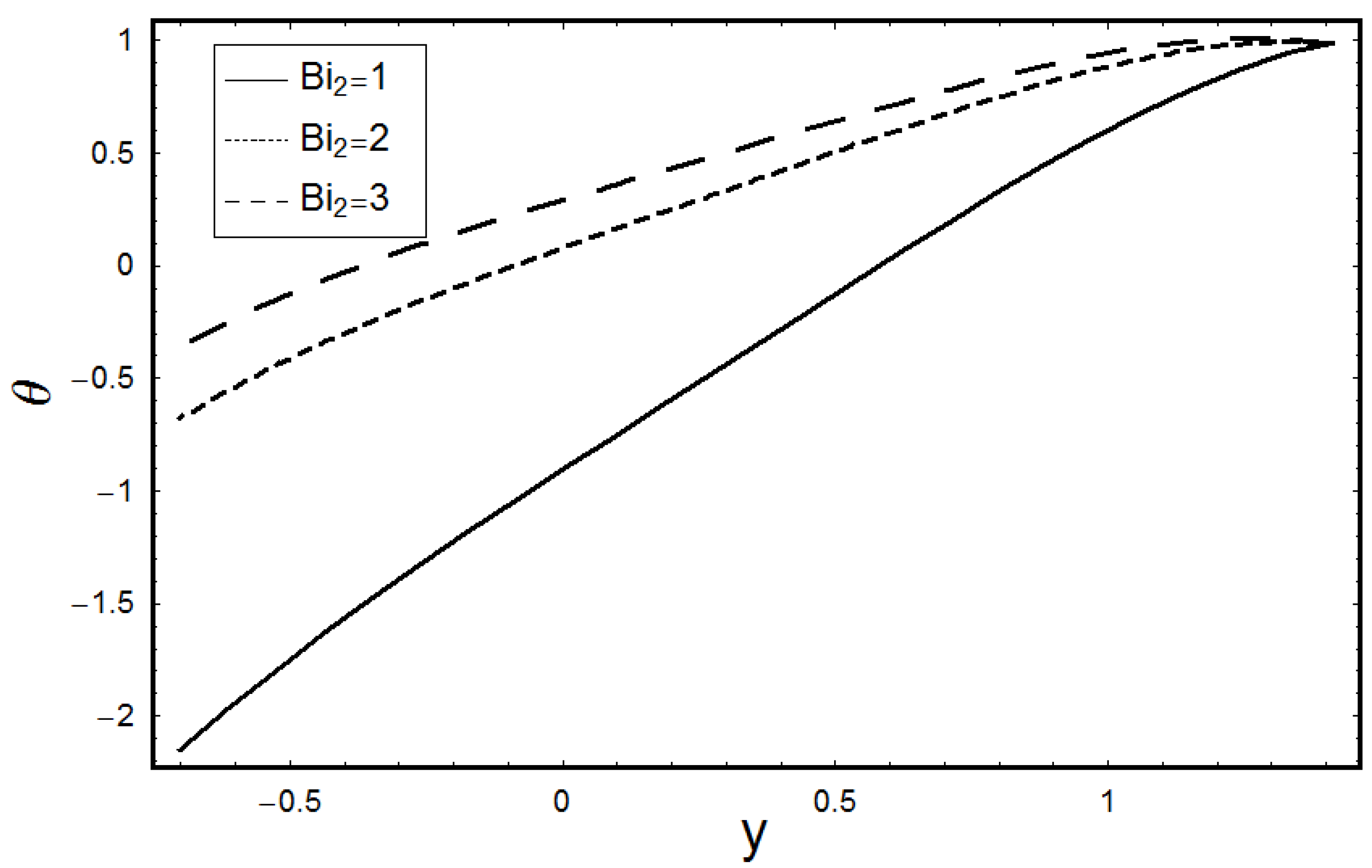
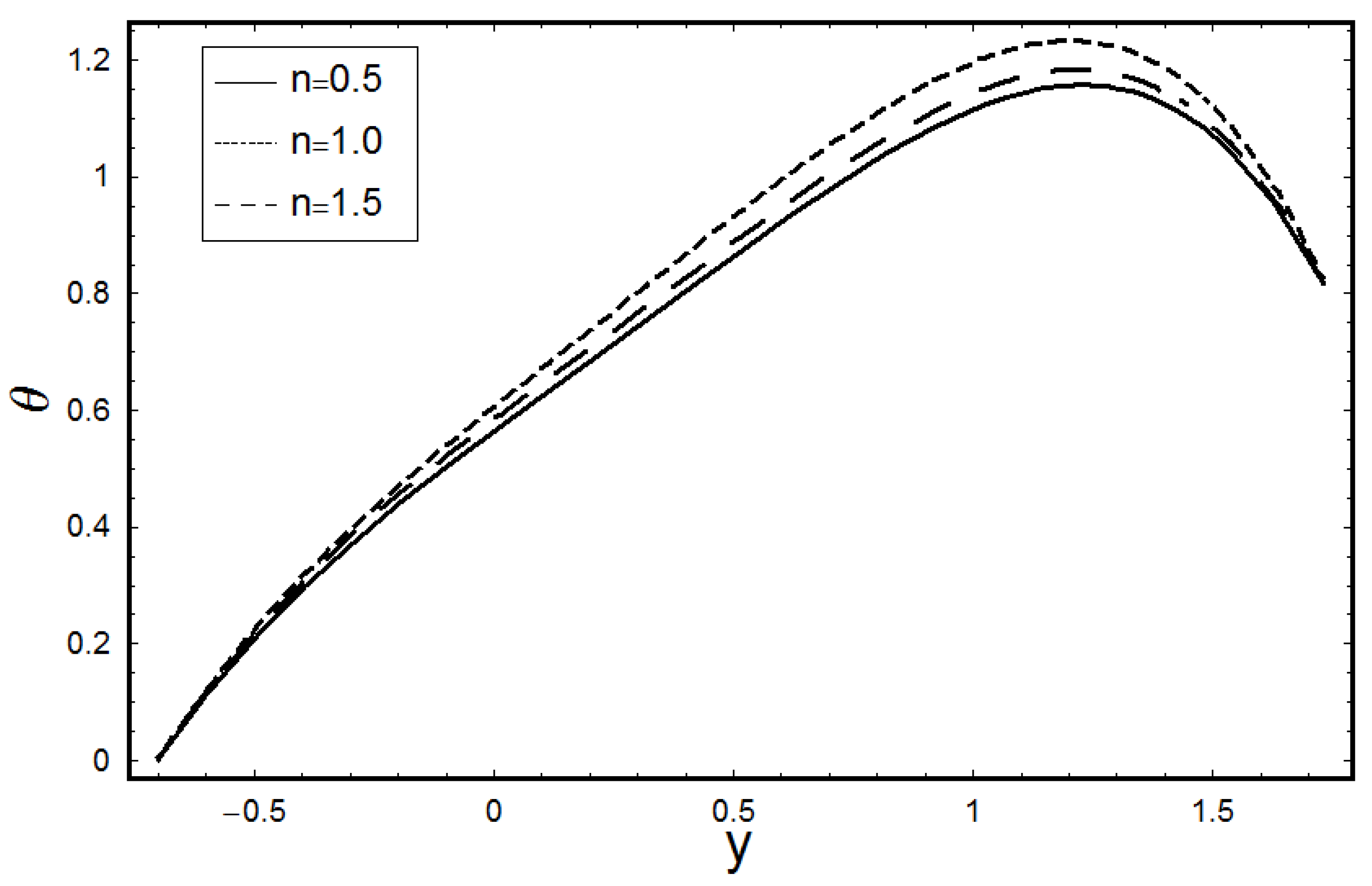

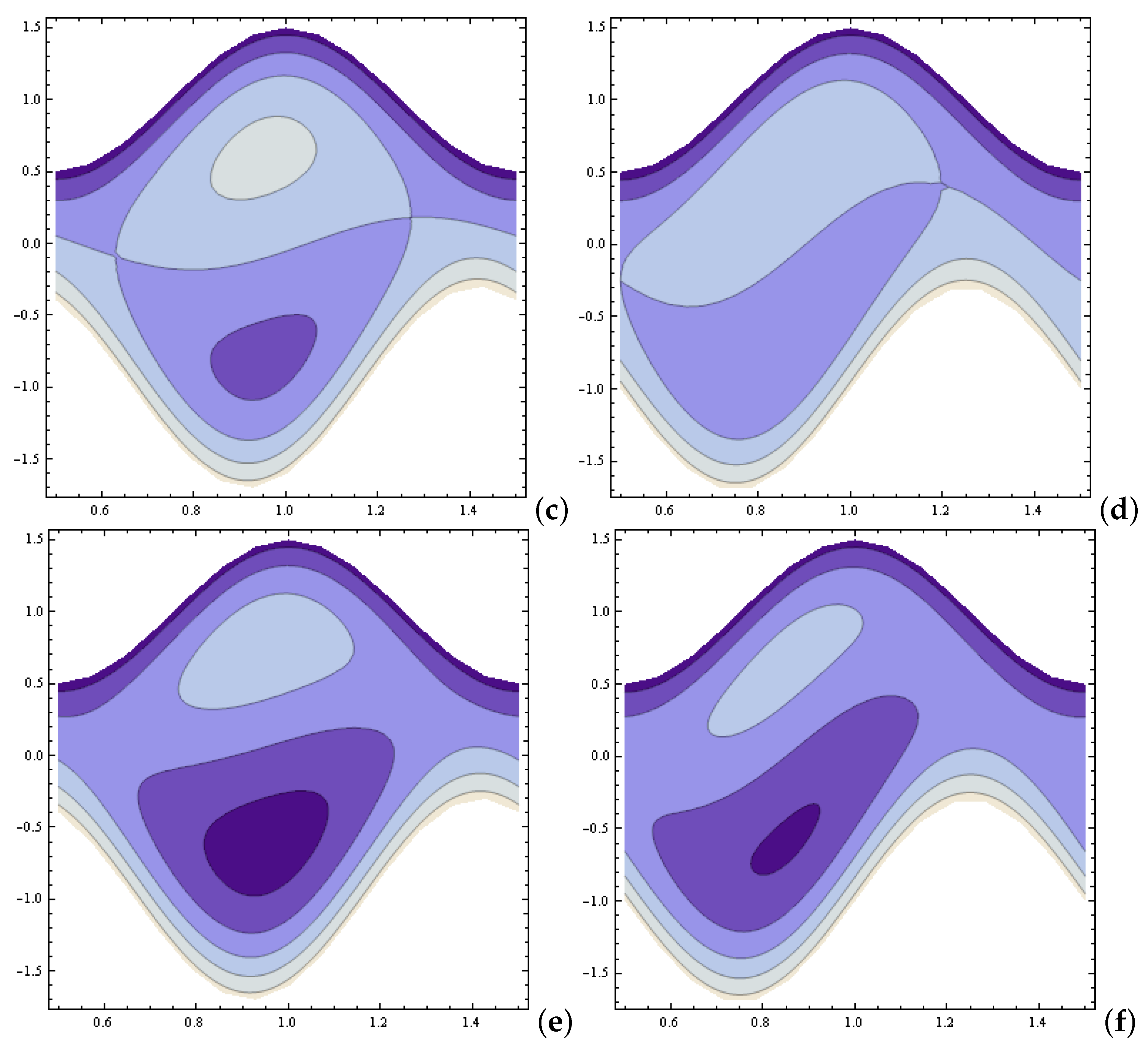
© 2020 by the authors. Licensee MDPI, Basel, Switzerland. This article is an open access article distributed under the terms and conditions of the Creative Commons Attribution (CC BY) license (http://creativecommons.org/licenses/by/4.0/).
Share and Cite
Iqbal, N.; Yasmin, H.; Kometa, B.K.; Attiya, A.A. Effects of Convection on Sisko Fluid with Peristalsis in an Asymmetric Channel. Math. Comput. Appl. 2020, 25, 52. https://doi.org/10.3390/mca25030052
Iqbal N, Yasmin H, Kometa BK, Attiya AA. Effects of Convection on Sisko Fluid with Peristalsis in an Asymmetric Channel. Mathematical and Computational Applications. 2020; 25(3):52. https://doi.org/10.3390/mca25030052
Chicago/Turabian StyleIqbal, Naveed, Humaira Yasmin, Bawfeh K. Kometa, and Adel A. Attiya. 2020. "Effects of Convection on Sisko Fluid with Peristalsis in an Asymmetric Channel" Mathematical and Computational Applications 25, no. 3: 52. https://doi.org/10.3390/mca25030052
APA StyleIqbal, N., Yasmin, H., Kometa, B. K., & Attiya, A. A. (2020). Effects of Convection on Sisko Fluid with Peristalsis in an Asymmetric Channel. Mathematical and Computational Applications, 25(3), 52. https://doi.org/10.3390/mca25030052






